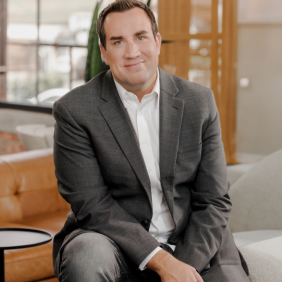Trust is the foundation of any successful team. Without trust, team members will not feel comfortable sharing their ideas, taking risks, or admitting their mistakes. Building a culture of trust on a team is crucial for achieving better results, higher levels of engagement, and less stress.
But first, we need to confront a brutal truth up front: trust alone is not enough. What teams need is a culture of psychological safety. When team members feel safe to express their opinions and ideas without fear of judgment or retribution, they are more likely to take risks and share their failures.
And the process of building psychological safety on a team has three stages: trust, risk, and respect. In this article, we will explore the three stages of building psychological safety and offer some advice on how leaders can guide their team through each one.
Stage 1: Trust
The first stage of building a culture of psychological safety on a team is trust. Team members need to trust each other before anyone takes any interpersonal risk like speaking up or disagreeing. And while many leaders go to elaborate lengths like trust falls, team-building activities, and personality tests, for most teams, trust is built by building relationships. People trust people they know and like. And for teams, that means finding uncommon commonalities between members of the team. When team members share their interests, hobbies, and personal stories, they can find common ground and build rapport. This can lead to more open and honest communication, which is essential for building trust.
The most common way leaders can help team members find uncommon commonalities is by creating unstructured moments for conversation. This could be through shared meals, shared activities, or even just small moments before or after meetings when the conversation drifts away from work. When team members have the opportunity to connect on a personal level, they can build relationships beyond their work roles and that builds trust in their work roles.
Stage 2: Risk
The second stage of building a culture of psychological safety on a team is risk. Once team members trust each other, they’re more willing to take risks. Risk-taking involves being vulnerable and sharing failures. It also involves airing disagreements. And can even mean sharing a “crazy” idea that’s outside the norm. All of those moments are forms of interpersonal risk—and teams need those risks. When team members take risks, they are more likely to come up with innovative ideas and solutions. However, taking risks can be scary, especially if team members do not feel safe to share their failures.
The most common way leaders can help team members take more risks is by modeling the way as a leader and being vulnerable first. When leaders share their own failures, or at a minimum admit when their weakness or doubts, they demonstrate that they are trusting the team. And when people feel trusted, they’re more likely to respond with trustworthy behavior and to trust the person being vulnerable more—which makes it more likely they’ll take interpersonal risks in the future too.
Stage 3: Respect
The final stage of building a culture of psychological safety on a team is respect. Respect happens after the risk—and is all about how people respond to one another’s risk-taking. It’s great to build small amounts of trust on a team, and great when people start to take interpersonal risks. But when someone speaks up, airs a disagreement, or admits a failure and they don’t feel heard, respected, and cared for—their trust is immediately diminished. And the trust levels of anyone watching the exchange go down as well. That’s the reason trust on a team is not enough. Trust needs to lead to risk taking which leads to respectful responses—otherwise the level of trust stays low.
The most common way leaders can help team members respond respectful is by practicing active listening. When vulnerable moments occur, leaders need to be focused on the person sharing, offer nonverbals that encourage more sharing, and ask clarifying questions to draw out even more. If leaders are focused elsewhere or snapping back with quick responses or criticisms, then not only does the person sharing feel slighted, but the team also begins to believe that is how to respond to divergent ideas. In contrast, active listening signals respect, which increases trust and encourages more sharing in the future, which offers more opportunities to signal respect.
In that way, the cycle of trust, risk, and respect operates like a flywheel and needs to be consistently maintained to keep the culture of trust high. By finding uncommon commonalities that build trust, encouraging interpersonal risk-taking, and responding to risk-taking with respect, teams can continue to increase their level of psychological safety—and provide a climate where everyone can do their best work ever.

About the author
David Burkus is an organizational psychologist, keynote speaker, and bestselling author of five books on leadership and teamwork.